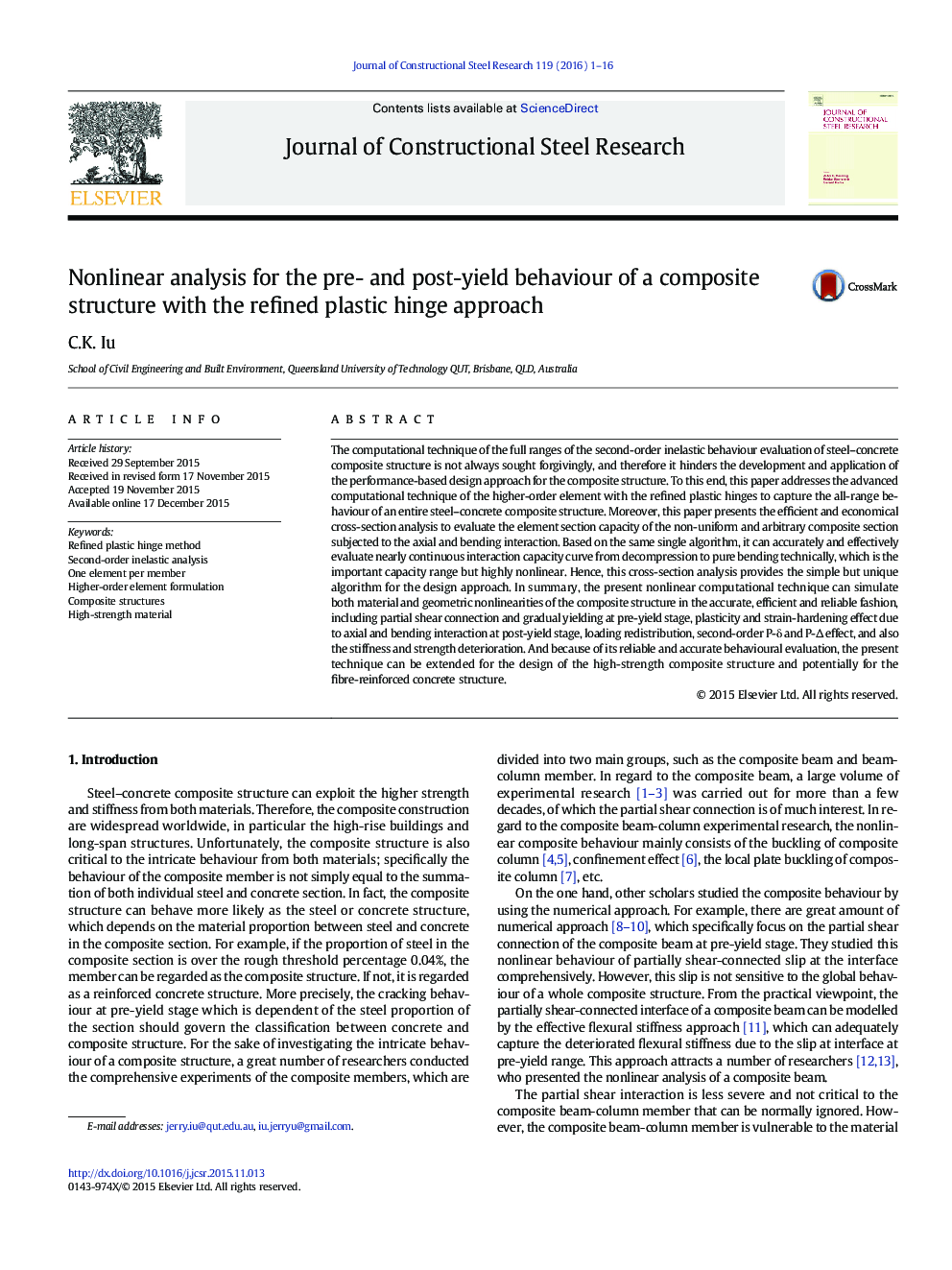| Article ID | Journal | Published Year | Pages | File Type |
|---|---|---|---|---|
| 284324 | Journal of Constructional Steel Research | 2016 | 16 Pages |
•This paper presents the numerical system design approach of a composite structure•Cross-section analysis evaluates interaction capacity by a unique set of equation•An algorithm computes continuous capacity curve from decompression to pure bending•Capacity evaluation of high-strength materials with ductility requirement•Capacity of this higher-order element with the refined plastic hinge is all ranges
The computational technique of the full ranges of the second-order inelastic behaviour evaluation of steel–concrete composite structure is not always sought forgivingly, and therefore it hinders the development and application of the performance-based design approach for the composite structure. To this end, this paper addresses the advanced computational technique of the higher-order element with the refined plastic hinges to capture the all-range behaviour of an entire steel–concrete composite structure. Moreover, this paper presents the efficient and economical cross-section analysis to evaluate the element section capacity of the non-uniform and arbitrary composite section subjected to the axial and bending interaction. Based on the same single algorithm, it can accurately and effectively evaluate nearly continuous interaction capacity curve from decompression to pure bending technically, which is the important capacity range but highly nonlinear. Hence, this cross-section analysis provides the simple but unique algorithm for the design approach. In summary, the present nonlinear computational technique can simulate both material and geometric nonlinearities of the composite structure in the accurate, efficient and reliable fashion, including partial shear connection and gradual yielding at pre-yield stage, plasticity and strain-hardening effect due to axial and bending interaction at post-yield stage, loading redistribution, second-order P-δ and P-Δ effect, and also the stiffness and strength deterioration. And because of its reliable and accurate behavioural evaluation, the present technique can be extended for the design of the high-strength composite structure and potentially for the fibre-reinforced concrete structure.
